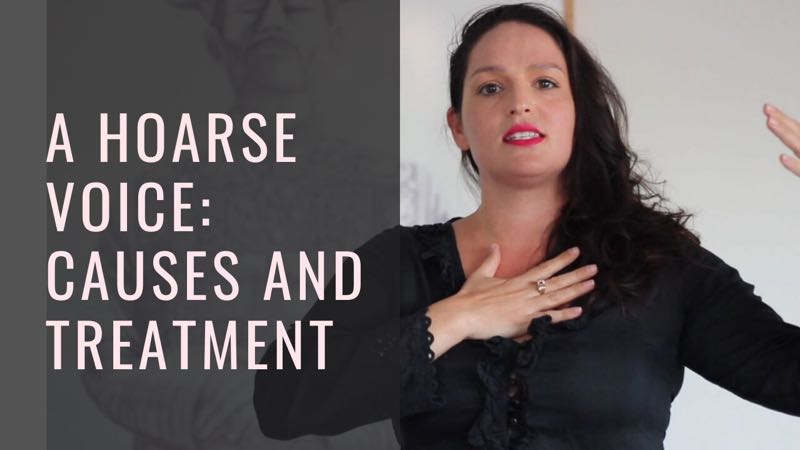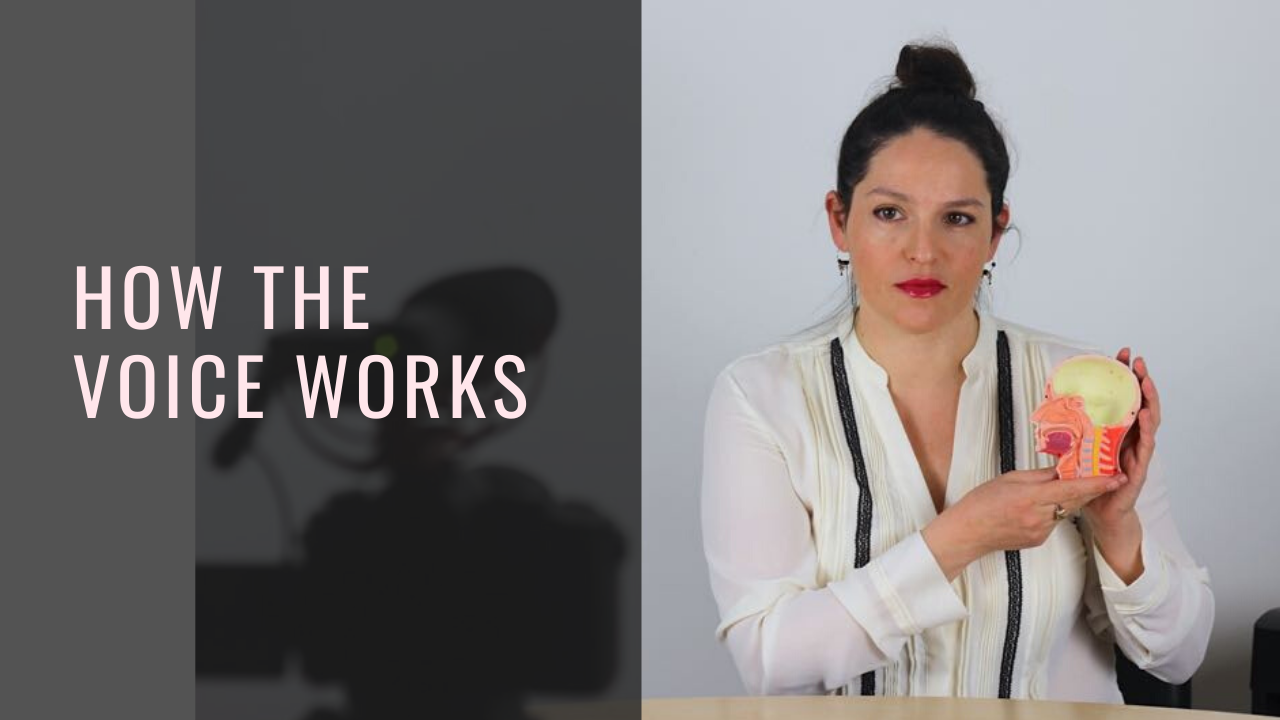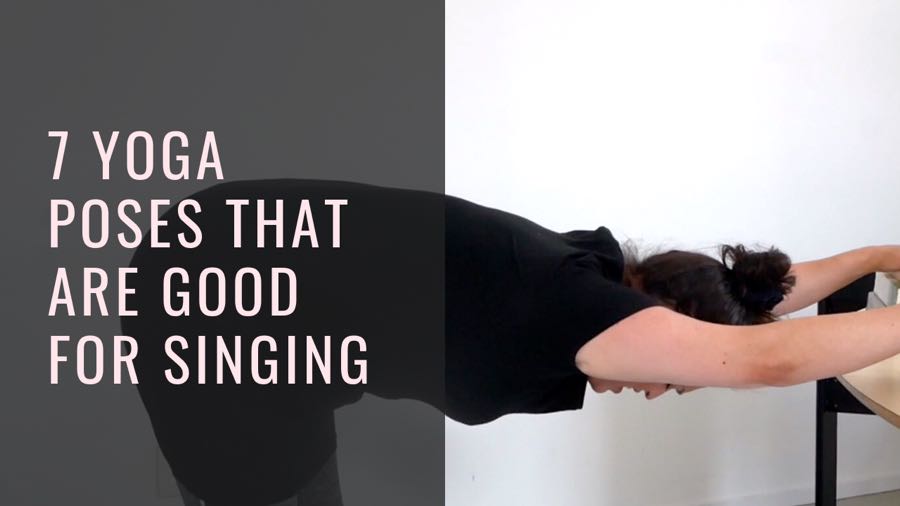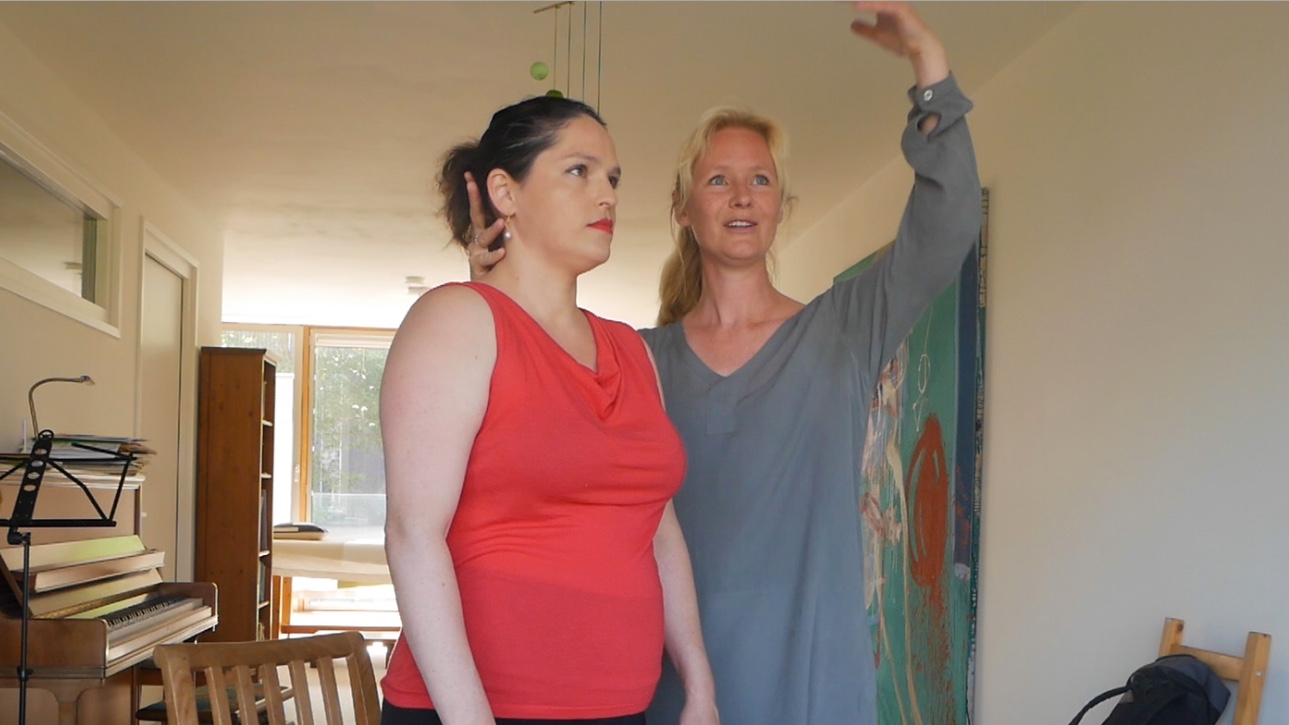Do you feel like you're making a lot of effort while singing, especially in the high notes or while being loud? The feeling that singing is difficult. Or that the throat hurts, the voice gets hoarse. In short: you're straining.
The meaning of straining is to make an unusually big effort.
Guilty! I used to be the strainer par excellence. I would activate my jaw and tongue and throat muscles - and shoulder muscles, in order to create a sound. As a bad habit, I would add them every time I sang.
When I think about the beginners amongst my students, it's hard to think of people who don't strain. Some more than others of course. It's such a shame when singers with potentially good voices choke it.
So let's jump right in and discuss how to sing without straining.
Three ways how to sing without straining
Understand how the voice actually works
Our intuition how singing works often betrays us. It says that high notes are high in the body, low notes low. That you should put a lot of effort and air in making loud notes. In general our false intuition tells us that singing involves a lot of muscle tension.
The reality is that our vocal cords have to come together and vibrate as the air passes through them. That vibration resonates in different spaces in our body, which are called the resonances. And that amplifies the sound.
This mechanism is the same for the entire vocal range. No neck, shoulders and tongue activation is needed to achieve different pitches. (caveat: there could be specific, subtle movements you could do to assist the natural function of the voice. But that's pretty advanced).
Free airflow
Especially if you tend to strain, you have to learn to relax the muscles around your respiratory system. Free airflow and passages of the air to be as open and as free as possible. Then you want proper vocal cord closure.
That's one aspect of how the voice works.
Don't do too much
What does make the pitch? Basically the length and thickness of the vocal cords. You get a higher pitch when they stretch and thin out.
Understand that the vocal cords lie down horizontally. When they elongate, this is not an up and down movement. The muscles that are resp for that are inside the larynx and we don't do it consciously.
Just know what the melody is. If you know the melody and have that note in your range, it should come out. You're not supposed to make the sound. Don't do too many extra things.
Get a nice posture, with minimum muscle effort
Become aware of your body behavior and posture and get in shape as a singer. Dot this through of all kinds of methods, such as yoga poses for singers, Alexander singing exercises, Greenberg, gyrotonics, pilates. They all work to achieve the same goal, to achieve
- A relaxed upper body
- Good core muscle work
- Gravity center around the pelvis
- A nicely aligned posture
So when you learn that and get to do that more and more, you will start to understand and feel what it means to have a relaxed and aligned body, that will allow airflow. It's the antidote to straining.
speaking about yoga...
Singing with muscle tension is like choking yourself while at the same time expecting good singing to come out. Not very likely.
You may not feel it as muscle tension by the way. But muscle tension can have the following symptoms :
- A 'small', weak voice
- A hoarse voice
- A voice that tires easily
- Difficulty in reaching high notes
- Singing out of tune
To be fair, these issues can (also) have other causes besides muscle tension. But removing muscle tension is your best bet and the first bet you should take.
Do the 'compensation policy'
If you did all the two above and it's not enough, follow what I call compensation principles. See, we have habits and these usually involve effort when it comes to extreme or loud notes. The bad habit is the straining. The compensation is reversing the habits that our body has. The compensation will get the body neutral and free. And so the vocal mechanism can carry on.
- Think of a smaller sound for loud notes:
When you visualize a sound as small, it usually will make us make less effort. I've found that for different people different images work. Some people feel it as a baby noise, some think of kittens or dolphins. A screechy door. That sounds super weird in the beginning. But if it feels right in the throat, I encourage you to continue singing.
Some people feel the strain as a forward push, as pushing on the throat. If that is the case, you should be:
- Thinking of using less air. Maybe even pretending to hold your air when you sing.
- Or alternatively, instead of thinking forward, you think of bringing the sound inside, as if the sound is coming into the body.
How to sing high notes without straining
A special case of the above mentioned compensation policy comes in handy with high notes. Ever tried to go for a high c and felt your throat clamping?
Think downwards for high notes, (and upwards for very low notes). For example, one exercise to relax the throat muscles is moving the hand down. Put your hand next to your cheek and as you sing a melody that goes up, you move your hand down, or rather relax your hand down. The higher the notes, the faster you let your hand drop. See the video below for an impression.
Take your desire to sing seriously: get tools to become a better singer in your inbox
Eye-openers, tips and stories. Also content that I don't publish on my website.





